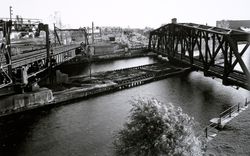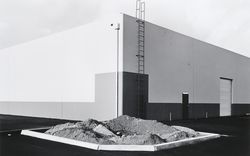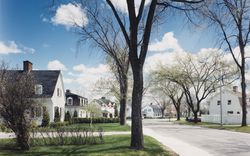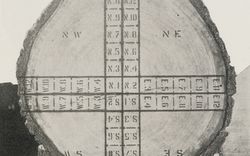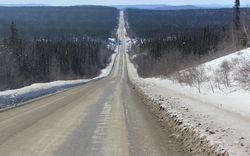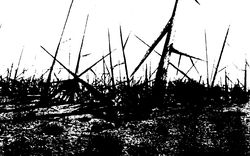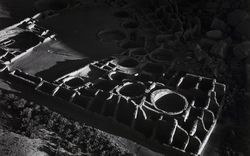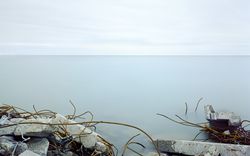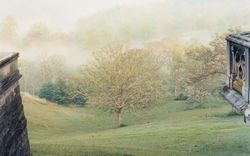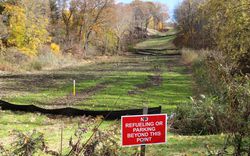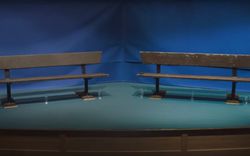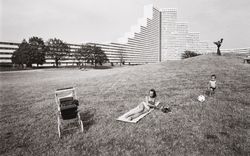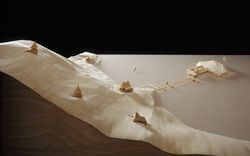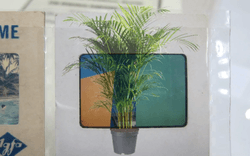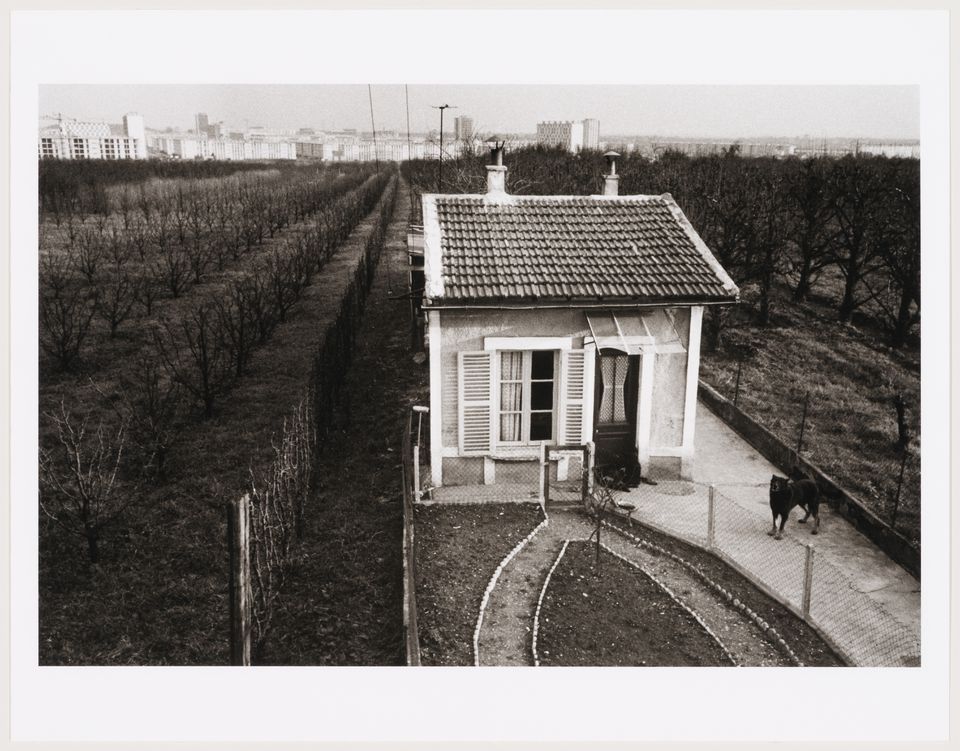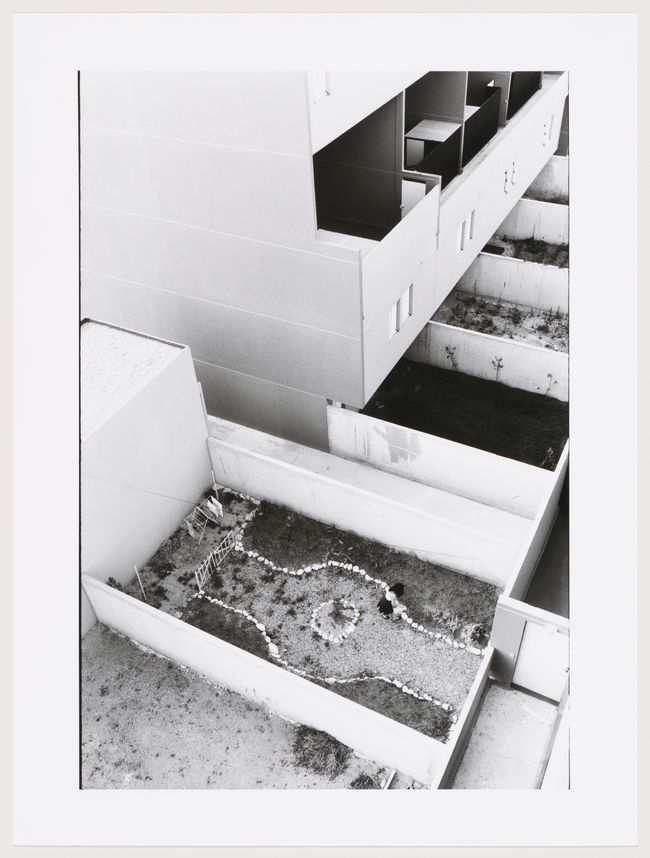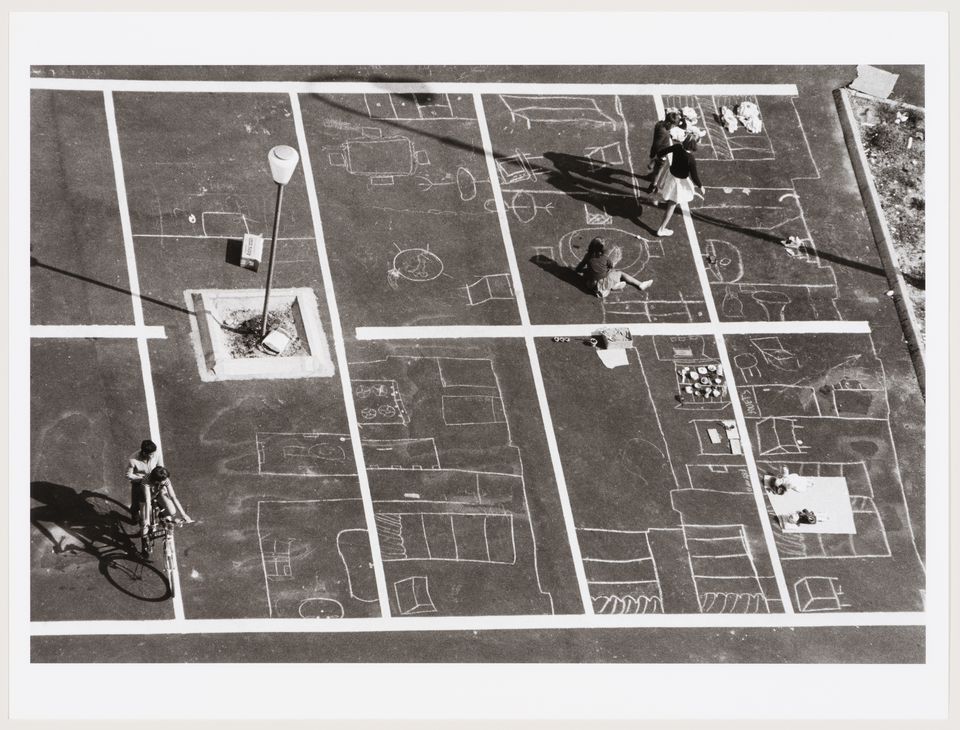Gardens and Parks Can Sometimes Cheat
Martin Rein-Cano interviewed by Claire Lubell. Photographs by Jacques Windenberger
- CL
- You’ve said before that you think of parks just as big gardens. In the work of TOPOTEK 1, do you consider a park, a garden, a sports field, a playground, or a landscape to be different categories or typologies?
- MRC
- Yes, obviously. But these terminologies are tricky, and they are not necessarily clear to the general public. One could say that if a garden is a house and a park is a museum, then a museum is a big house, but this would be wrong. The term garden is clear as a typology, but the park became contaminated, especially in the eighteenth and nineteenth centuries: contaminated by the idea of a Romantic, borderless space that was unclear in where it would start and where it would end. The sensation of space was supposed to confuse this relationship between the garden and the space outside. The word garden is etymologically clear because it means “to guard” or “to protect.” The first idea of garden as paradise originates in Persia, and pairidaeza in Persian means “walled space.” I like this idea of a clear division, of a clean typology, and I try to rescue this in our work. The Romantic garden is a garden of camouflage—everything is supposed to be half-hidden—but I prefer more obscene visibility. I relate more to a garden that is clearly “made”—that you can see, enter, and exit. You can decide to like it or not to like it, but I don’t trick you into it. I like to hybridize typologies, but to do this you have to know what you are mixing. So it’s important to be clear about the typologies in order to then work with them, manipulate them, change them, and question them.
Read more
- CL
- You often reference the legacy of the English garden in your work and also discuss the extent to which landscape design is or is not historicized. Do you think there is a public perception of timelessness in landscape design, as opposed to architecture, which can be more easily dated?
- MRC
- Romanticism contaminated the park so strongly that the park became a timeless piece—but it is not, it is a piece of its time. It’s a piece of design of its time, we just lost the ability to read it because it felt out of time or it became a standard. Landscape architecture is perhaps also not as well reflected and as widely known as architecture among the general public or even among the educated general public. It’s a question of being trained to look at, and to understand, certain things.
- CL
- How conscious are you of the lineage within which your work—the way you reorganize nature—is positioned? Or do you feel your work breaks from certain traditions of landscape design?
- MRC
- I studied art history before I studied landscape architecture, so I came into the profession through the history of gardens. So I’m very aware of our history. There’s a lot of very interesting thoughts, concepts, and strategies that one can still apply, but applying strategies doesn’t mean applying the same formal outcome. For example, I would say that the park we did in Copenhagen, Superkilen, is an update of an English landscape park. We call it English, but none of the plants used in these parks are actually from England. The English landscape parks appeared together with colonization—James Cook, for example, brought back many plants to England on the Bounty. So all the trees were foreign, all the architecture built in the parks was foreign, but nevertheless the park became a prototype of English space. Then it was exported throughout the world, and later also became the structure for park-like, borderless suburbs. This bucolic idea of landscape became part of English colonies worldwide. The whole of New Zealand was transformed this way, especially by bringing in sheep to create a déjà vu of an English landscape but with the wrong weather, the wrong plants, and some of the wrong animals. It’s important to be honest about what is valuable and what is not valuable in this process. The English landscape park was incredibly modern and influential. It was radical when it was built because it abolished the primary characteristic of a garden—the wall. The garden existed only because it had a wall and yet suddenly in the 18th century people said “Our park doesn’t have a wall, we dissolved the wall.” That only happened in architecture two or three hundred years later.
Another characteristic of the English landscape park is its dynamism. It’s a piece of art through which you actually need to move to experience the space. The Baroque park was merely a frame in which a theatre of the state would take place, but the English landscape garden suddenly operated like a movie in which you moved from one picture to another. So the idea of a time-space fluidity—a movement driven idea of space—that became so normal in modern times was, I think, first tested in English landscape gardens.
The process of changing identity, through stealing or adopting, is also very relevant to me. A cedar tree, for example, from the Atlas Mountains or Lebanon that grows in England is a foreign tree. Or is it actually an English tree because it’s been growing there for two hundred years? There are no nicer cedars than those growing in English parks. In the end, these misunderstandings, translations, or shifts show that you can change how we perceive identity and belonging. We can make it. And this, I think, I deeply rescue from the English landscape park. The problem is that it has been copied so much and it has become such an archetype that it has been lost. Through the mere act of walking in the landscape, it transforms into a park and into a visual experience. If you drive through the desert, with music on, you will have a cinematographic experience. You could even say that calling roads parkways is part of this. So the whole country, the whole world has become an English landscape garden. And then you have to ask yourself what it means for parks on a smaller scale, on an urban scale, if the world is an English park. How do we have to work to make the park visible again? And that’s the reason we also need, in certain situations, an opposition to that Romantic attitude. - CL
- Your work exaggerates artificiality in many ways, and you use humour, irony, and even delusion to maintain the idea of a park as a fantasy. But nonetheless, some have described your parks as urban space. The recourse to the word “urban” to describe your landscapes is paradoxical. Do you think this distinction is still relevant?
- MRC
- Architects also use nature and nature’s materials to build buildings, but no one questions them. Nature’s materials are used in construction, but in landscape design it’s more obvious because the tree has a certain independence that can’t be controlled. A piece of stone can be cut to a certain form and that certain form will remain the same for quite some time. But with trees, with plants especially, you have to work on them constantly.
The issue of time is relevant, because in a garden, you always have to cultivate what you do. It’s not that you can just make it and then leave it. In fact, its qualities appear if you have the time to really work with them. There’s also hopelessness to it: you’re never going to win. But this is also why people love gardening, because it’s almost relaxing to know that you will never win. Gardens have everything that buildings don’t, so in that respect they’re not comparable. And that’s another big confusion because in the profession of landscape architecture, the name architecture has become more and more important. So to speak about “urban” as a terminology is a way to say that a landscape is more artificial, or more architectonic, and less “planty.”
- CL
- You’ve spoken about the role of the park as a space of friction. If the distinction between what is considered urban and what is considered park has become meaningless, do you think the definition of social codes is the last true differentiation between urban space and park space? They’re codified in different ways, but where there is grass there seems to be an acceptance of looser social codes.
- MRC
- Absolutely, you wouldn’t lie on a sidewalk somewhere. The park is a very, very important space to try different behaviours. When I speak about conflicts, I’m also testing certain limits of the park. You have to remember that until the beginning of the twentieth century it was forbidden to lie on the grass at all. You were only allowed to walk on the path and you had to behave yourself. So the way we use and approach the park has changed. It’s not a given of the typology of the park that we act a certain way. Parks are perhaps the easiest test ground for different behaviours because its boundaries are, in general, not as clear and because they belong to everyone without having to pay to enter. The sense that a park is public is very strong.
But when it comes to this idea of provocation, of conflict, it’s also a question of context. If you make a park in India maybe you wouldn’t look for conflict because the whole country is in constant conflict. But if you look at northern or richer parts of the world, we lack possibilities for encounter. The richer the country, the more lonely the people, and the less contact between classes. This leads to less understanding and more ignorance. So, to a certain extent, maybe we need public spaces in our countries that force conflicts. This can be tested in the park, which is already a provocation. Can such an experiment become a new social norm or not? How many people are complaining? Is it acceptable? Is it not? This is what public spaces have to be for, I think. And sometimes you have to force the people to use them that way, because we are so preconditioned that we don’t feel brave enough.
For example, in the Superkilen park we have a boxing ring, which is rather uncommon in a public space. But the area where we built this park is an area where aggression is very common. So how do you deal with that? One way is to try to pacify it by putting in some trees, and some grass, and whatever—try to ignore it, or keep it subconscious. Or you can try to expose it. When I speak about conflicts, I always speak about cultivated conflicts. This is a psychological term. When you go to your shrink, he’s not going to solve your problems. He’s going to teach you how to cultivate them to, in the best scenario, become part of your character without them bothering you. And with boxing, it’s similar: if two guys fight on bare ground and hit each other in the face, it’s perhaps a crime, but if the same thing happens forty centimetres above ground surrounded by ropes, it’s a sport and an attraction. It has rules and it only happens in that ring. So suddenly something that was already there becomes cultivated. Instead of ignoring problems, they are made part of the aesthetic of the place. But obviously, this depends very much on the context in which you work.
One of the problems, or conflicts, of landscape architecture is that is has been a profession of peace, or of mediation. These kind of meditative spaces are nice to have, of course, and we should still have them, but we also need other spaces of encounter which are rougher and don’t play up an idea of eternal beauty. These spaces of encounter can trick people into starting to question their behaviour and what they are seeing. I think that we should use all possible strategies and not be reduced to being a profession that makes nice, meditative spaces. This is emancipatory for me. We have to be as proactive as any other profession in changing the city.
- CL
- When you’re working in Western Europe, you’re mostly working in what could be considered “cultivated” contexts. But, as in Canada, the attitude towards landscape, nature, and the environment in Germany and Switzerland is influenced by a myth of “wilderness.” So even if many of your projects are in highly cultivated settings, do you reflect on the myth of wilderness? Is the exaggeration of artificiality a reaction to wilderness as a concept in landscape practice?
- MRC
- The myth of wilderness is absolutely and totally artificial. It’s not the “Other.” The wilderness is not the anti-human at all. We made it. We made the wilderness wild—a certain kind of wilderness. We don’t want every possible wilderness, so certain standards defined what we think is beautiful, which also changes over time. There was a time in which people wouldn’t swim in the ocean or consider the beach a landscape to visit. Now this is part of an experience of nature. It’s possible to visit the “wilderness” because it was invented. I think the English were the first to visit the Alps, and in the end whole countries, whole landscapes, become landscape parks. It’s just a question how you read them and this reading is manmade. This is part of a Romantic heritage, of the way we romanticize the wilderness.
Every country has a myth. Germany’s is based on a tradition that is maybe similar to one in Canada. The etymology of the German word for space, raum, suggests that the act of clearing is part of making space. In other words, according to a myth of wilderness, one could argue that to make space you first need to get rid of trees, called baum in German. Weather, topography, and plants start to define differences: someone who grew up in the Mediterranean will think very differently about wilderness than someone who grew up in Northern Europe.
There’s nothing wrong with having myths. It’s part of every culture to cultivate certain myths, but we should know that they are myths in order to continue cultivating them. The problem is when we believe in them. - CL
- In the last ten to fifteen years, the distinction between landscape architecture as a productive rather than aesthetic practice—even if it never was only aesthetic—has become increasingly important. This is particularly obvious with the emergence of landscape urbanism in North America. But TOPOTEK 1 started working earlier, so, as the office evolves, how do you position yourself in relation to this disciplinary shift?
- MRC
- First of all, I don’t differentiate between, let’s say, cultivated and non-cultivated contexts. There are just different contexts that need to be approached in different ways. So in the end, the challenge is always the same. I keep a certain distance from the situations that I perceive: I try to look at them, as much as possible, without prejudice. I try to ask what is really going on without letting reality dominate.
Secondly, I think landscape urbanism has a lot to do with an American culture of justification—the need to justify everything. The way I perceive landscape architecture, and also the way I practice it, is much more of an artistic discipline, which allows a certain freedom to be useless. In terms of social codes, I think senselessness is sometimes an important part of the game that makes people loosen up. Because if you go to a park and suddenly you can box or suddenly you are invited to have certain behaviours that you wouldn’t have thought of before, then the way you perceive things can change. And I think functionalization is just a way to justify doing a project. My perspective might come from being a child of the 1980s: I grew up looking toward art and design. But I also believe that this functional way of working actually mediocritizes the quality of space produced.
- CL
- There’s a conscious attempt today to reorganize the land and reorganize natural processes. Is this an agenda that TOPOTEK 1 identifies with as landscape designers?
- MRC
- These categorizations are always difficult because they are reductive. In political terms, reorganizing nature is what we have been doing for the last thirty thousand years and it is just the velocity and the intensity of it that has grown over time to such an extent that reorganizing nature poisons nature. We have to work on the planet as a park: we have to accept that we are in charge and that it’s not about protecting nature. It’s about transforming nature in such a way so that it’s not poisonous for us and for the food that we eat. And these processes, as we all know, are complex. We have to keep as many species of animals and plants as possible alive, but I think that we have to do it with much more planning. It’s not a given anymore. We should give up the idea of romanticizing and saying, “I am not having it.” Who are we to protect the environment? Or nature? We have to transform it more and more so that it still gives more and more people a good home that is nice and healthy to live in. So the more rational the better. Transforming nature is something that I can identify with completely.
On a smaller scale I have the impression that the faking of nature to resemble something that is nature-like also hinders our ability to see reality and truthfulness. We feel that we are doing something good. And sometimes what is really good doesn’t feel right. Many ecological activists in Germany are against windmills because they feel that the windmills destroy the scenery of the landscape that they love so much. They feel that these objects are foreign to the landscape—industrial and not natural. But we all know that they are very much needed so that we don’t burn carbon or other fuels to produce energy, and that they can give us a much better environment. These kind of contradictions are sometimes really hard to accept. The obvious is not necessarily the right thing to do. In that respect, gardens and parks can sometimes cheat: they can create a myth and not differentiate between that myth and reality. They can sell the myth as reality.
Martin Rein-Cano spoke with us about parks, gardens, and landscapes in May 2017, when he visited the CCA to participate in the debate, No Parks?.
